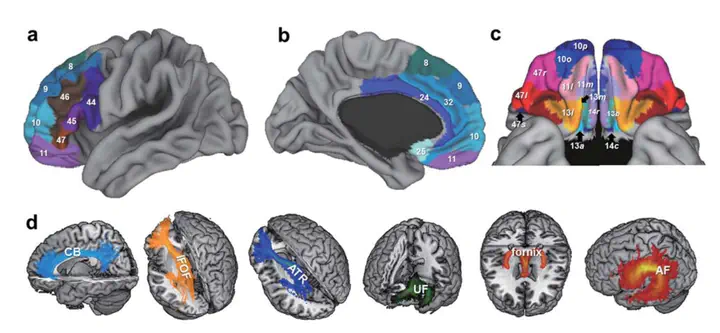 PFC subdivisions
PFC subdivisionsAbstract
Schizophrenia is hypothesized to arise from disrupted brain connectivity. This “dysconnectivity hypothesis” has generated interest in discovering whether there is anatomical and functional dysconnectivity between the prefrontal cortex (PFC) and other brain regions, and how this dysconnectivity is linked to the impaired cognitive functions and aberrant behaviors of schizophrenia. Critical advances in neuroimaging technologies, including diffusion tensor imaging (DTI) and functional magnetic resonance imaging (fMRI), make it possible to explore these issues. DTI affords the possibility to explore anatomical connectivity in the human brain in vivo and fMRI can be used to make inferences about functional connections between brain regions. In this review, we present major advances in the understanding of PFC anatomical and functional dysconnectivity and their implications in schizophrenia. We then briefly discuss future prospects that need to be explored in order to move beyond simple mapping of connectivity changes to elucidate the neuronal mechanisms underlying schizophrenia.